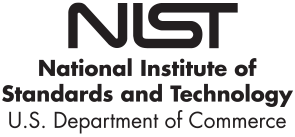
Download/Print PDF Take the Quiz
Someone in your company gets an email.
It looks legitimate — but with one click on a link, or one download of an attachment, everyone is locked out of your network. That link downloaded software that holds your data hostage. That's a ransomware attack.
The attackers ask for money or cryptocurrency, but even if you pay, you don't know if the cybercriminals will keep your data or destroy your files. Meanwhile, the information you need to run your business and sensitive details about your customers, employees, and company are now in criminal hands. Ransomware can take a serious toll on your business.
How it Happens
Criminals can start a ransomware attack in a variety of ways.
Scam emails
with links and attachments that put your data and network at risk. These phishing emails make up most ransomware attacks.
Server vulnerabilities
which can be exploited by hackers.
Infected websites
that automatically download malicious software onto your computer.
Online ads
that contain malicious code — even on websites you know and trust.
How To Protect Your Business
Have a plan
How would your business stay up and running after a ransomware attack? Put this plan in writing and share it with everyone who needs to know.
Back up your data
Regularly save important files to a drive or server that’s not connected to your network. Make data backup part of your routine business operations.
Keep your security up to date
Always install the latest patches and updates. Look for additional means of protection, like email authentication, and intrusion prevention software, and set them to update automatically on your computer. On mobile devices, you may have to do it manually.
Alert your staff
Teach them how to avoid phishing scams and show them some of the common ways computers and devices become infected. Include tips for spotting and protecting against ransomware in your regular orientation and training.
What To Do If You're Attacked

Limit the damage
Immediately disconnect the infected computers or devices from your network. If your data has been stolen, take steps to protect your company and notify those who might be affected.
Contact the authorities
Report the attack right away to your local FBI office.
Keep your business running
Now’s the time to implement that plan. Having data backed up will help.
Should I pay the ransom?
Law enforcement doesn’t recommend that, but it’s up to you to determine whether the risks and costs of paying are worth the possibility of getting your files back. However, paying the ransom may not guarantee you get your data back.
Notify customers
If your data or personal information was compromised, make sure you notify the affected parties ― they could be at risk of identity theft. Find information on how to do that at Data Breach Response: A Guide for Business.










